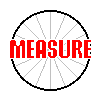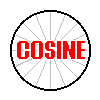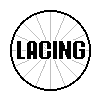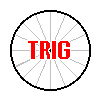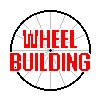



















| |
| |




















|
LACING A WHEEL OFF-CENTER




















| |
| |




















|
To lace a wheel off-center is real easy, the basic concept is just like a rear wheel with dish offset. All you need to know is how far off center you want the rim to be. Subtract the amount of offset from the HFO value of the flange the rim moves closer to and add the amount of offset to the HFO value of the flange the rim moves away from. In wheels that would normally have the rim centered between the hub flanges, you could offset the rim most of the way towards one flange. Offsetting a wheel could be used for wheels for wheelchairs, wheels for a bike trailer, rear wheels for a tricycle, the wheels of a push cart or baby jogger and for just about any spoked wheel that isn't aligned with the center of gravity of the main vehicle or object. This idea should never be used in bicycle wheels, or for the front wheel of a tricycle.
For example, lets say you want the rim to be offset 20mm from the center of a typical symmetrical hub. The flanges are 100mm apart, so the distance from the center of the hub to a flange is 50mm. You would use 30mm for the HFO value of the flange the rim moves closer to, and 70mm for the HFO value of the flange the rim moves away from.
You don't want to offset the rim so far the tire or rim will end up rubbing against parts of the supported object, watch for adequate clearance for wheel that turn or pivot on the object. You also don't want to offset the rim completely over one of the hub flanges, this would result in one side of the wheel not having any lateral strength. I recommend having at least 10mm of dish from the center of the spokes attachment to the rim to the center of the flange.

